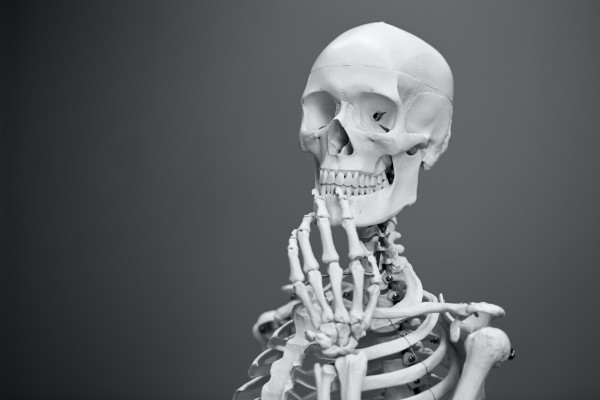In last week's blog I discussed the importance of the TMJ to health and function, and in doing so I introduced one of the cranial nerves, the accessory nerve. This week I want to introduce you to the rest of the cranial nerves, as they play a very important role in the function and control of your face!
Cranial Nerve I: Olfactory nerve
- Comes from the mucous membrane in the roof of the nasal cavity
- Supplies sensory information to the nasal cavity (sense of smell)
Cranial Nerve II: Optic nerve
- Comes for the retina and goes to photoreceptors in the eye
- Supplies sensory information to the eye (sense of vision)
Cranial Nerve III: Oculomotor nerve
- Comes from the midbrain
- Supplies motor sensation to most of the eye muscles
- Responsible for moving the eyeball upwards, downwards, and medially, raising the upper eyelid, constricting the pupil, and accommodating the eye for near vision
Cranial Nerve IV: Trochlear nerve
- Comes from the midbrain (below CN III)
- Supplies motor sensation to one muscle in the eye
- Responsible for depressing and abducting the eyeball
Cranial Nerve V: Trigeminal nerve
- Comes from the midbrain, PONS, medulla and spinal cord
- Supplies sensory information to the skin of the forehead, scalp, eyelids, external ear, jaw, chin, noe, nasal cavity, anterior ? tongue, and around mouth and teeth
- Supplies motor information to muscles of mastication (those used when chewing), and those involved with swallowing and speaking
- Also supplies sensation of touch, pain, temperature, and pressure
Cranial Nerve VI: Abducens nerve
- Come from most medial part of PONS-medulla junction
- Supplies motor sensation to one muscle in the eye
- Responsible for moving eyeball laterally
- Issues with this nerve can cause ‘lazy eye’ symptoms (where one eye is always looking inwards)
Cranial Nerve VII: Facial nerve
- Comes from the PONS, lateral to the abducens nerve
- Supplies motor sensation to muscles of facial expression, muscles in the ear, some of the muscles that assist with chewing and swallowing, secretion of tears
- Supplies sensory information about taste, touch, pain and temperature to anterior ? tongue, and most of face (similar to areas supplied by trigeminal nerve)
Cranial Nerve VIII: Vestibulocochlear nerve
- Comes from PONS-medulla junction
- Supplies macula within the utricle and saccule of the ear, dealing with linear acceleration/gravity
- Supplies semicircular canals with ear, dealing with rotation acceleration
- Supplies cochlear duct within ear, dealing with auditory sensations
- Issues with this nerve can be one of the causes of vertigo
Cranial Nerve IX: Glossopharyngeal nerve
- Comes from the medulla
- Supplies some muscles within the mouth and throat
- Responsible for motor control to some muscles involved in swallowing, but also touch. Pain and temperature sensations of the ear, pharynx, soft palate, and tongue, taste to posterior ? of tongue, and sense of PO2, PCO2, pH, and blood pressure from the carotid branches
Cranial Nerve X: Vagus nerve
- Comes from the medulla
- Supplies almost EVERY ORGAN IN THE BODY
- Main parasympathetic nerve in the body, so is responsible for calming your body to a state of relaxation, especially after periods of stress (rest and digest, instead of fight or flight)
- One of the most important nerves in the body that we assess, and the only exercises we give to every single client are ones to help activate it
Cranial Nerve XI: Accessory nerve
- Comes from medulla and upper cervical spinal cord (C1-C5)
- Supplies motor function to sternocleidomastoid and trapezius muscles
- Learn more about the relevance of this nerve in my TMJ blog
Cranial Nerve XII: Hypoglossal nerve
- Comes from medulla
- Supplies motor function to intrinsic and extrinsic muscles of the tongue
